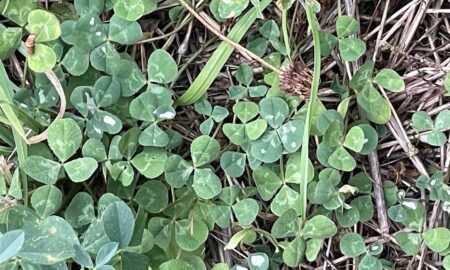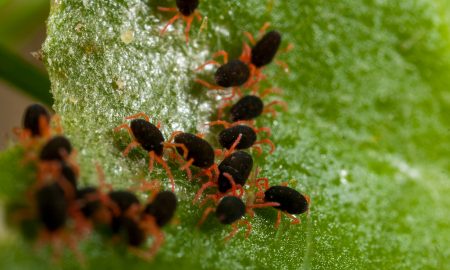This autumn there have been high numbers of millipedes in crops across NSW and northern Victoria. In this article we will share some recent reports and explain the difference between the black Portuguese millipede and native species.
Recent reports
In late May to early June, we have received reports of millipedes in oats in Blayney (NSW), wheat in Temora (NSW), and canola in Balladoran (NSW) and St Arnaud (Northern Vic).
In most cases numbers were much higher than in previous years, although there were no reports of damage.
The black Portuguese millipede (Ommatoiulus moreletii) is the most common millipede species found in grain crops, however most of the millipedes reported this year are native species.
In the past, damage from millipedes (predominantly the black Portuguese millipede) has been reported mostly from the medium and high rainfall zones including near Wagga Wagga and Henty in New South Wales; the Mid North, Yorke Peninsula and Kangaroo Island in South Australia; and the Western Districts and Wimmera areas of Victoria.
It is likely that the large number of millipedes being seen this year is a result of the high stubble loads and population rebound after the dry spring conditions in 2020.
Native Australian millipedes
In Australia there are around 2000 species of native millipedes and they are very common in mild damp climates.
The majority of native millipedes are detritovores, feeding on dead plant matter, so they are unlikely to feed on agricultural crops. As detritivores are important for recycling organic matter and generating nutrients in soils, native species actually have a beneficial role in paddocks.
It is therefore important to distinguish black Portuguese millipede from native species found in grain crops.
Black Portuguese millipedes
The black Portuguese millipede is an introduced species, which was first detected in 1952 in South Australia. It is now common across South Australia, New South Wales, Victoria, Tasmania and Western Australia.
For more information on black Portuguese millipedes see our PestNotes article.
Black Portuguese millipedes breed in April-May, which is why large numbers of this species are often reported at the start of winter.
This pest can reach large numbers because they do not have many predators in Australia (being an exotic pest) and because of their chemical defences. There has been some use of nematodes and a parasitoid fly as biological control agents but these are unlikely to work at the scale of broadacre agriculture.
Despite their broad distribution and occasionally high population numbers, black Portuguese millipedes do not seem to have negative effects on any native species or on most crops.
Identification
As black Portuguese millipedes are now very common in Victoria and NSW, it’s likely you will come across them at some stage.
They are black and do not vary much in colour, although juveniles are whiter directly after moulting with a dark stripe on both sides of their body. Like most millipedes, they are around 30 to 45 millimetres long when fully developed and adults have up to 50 segments with each segment having two pairs of legs. In comparison, centipedes have only one pair of legs per segment.
The clearest identification feature that distinguishes black Portuguese millipedes from native species commonly found in southern Australia is that they have very smooth, cylindrical bodies with small, smooth rings. In comparison, native millipedes come in a range of colours and most of them have larger rings along their bodies with a rough or ridged appearance.
Crop damage
Crop feeding damage from millipedes is unusual, but black Portuguese millipedes occasionally attack living plants by chewing the leaves and stems. It is not known why they do this.
Most reported millipede damage has occurred in emerging canola crops on black organic soils with heavy stubble loads. Additionally, lupin and lucerne plants are vulnerable to attack from black Portuguese millipedes.
Damage has also been known to occur on cereals where the stems of young plants are chewed.
Management
In the vast majority of circumstances, millipedes, especially native species, will not require management in crops. There have been many instances where no damage has occurred despite large millipede populations.
When damage has been recorded in the past, it was in areas with high volumes of retained stubble or where plant matter from the previous year was present. The stubble is thought to act as a source of moisture for millipedes over summer.
In these situations, the best approach is to monitor millipede numbers and observe if they are feeding directly on crops. Millipedes are mostly active and feed at night, so this is the best time to check if they are causing damage.
Acknowledgements
Many thanks for the reports from James Challis (Nutrien Ag), Angus Pryse Jones (Hill and Crofts), Mark Breust (DeltaAg) and Chris Turner (Nutrien Ag). Thank you to Thomas Heddle (SARDI), Hannah Zurcher (CSIRO) and Matthew Binns (CSIRO) for providing additional information for the article and to Paul Umina, Leo McGrane and Garry McDonald for contributing to this article.
Cover image: Photo by Andrew Weeks, Cesar Australia









